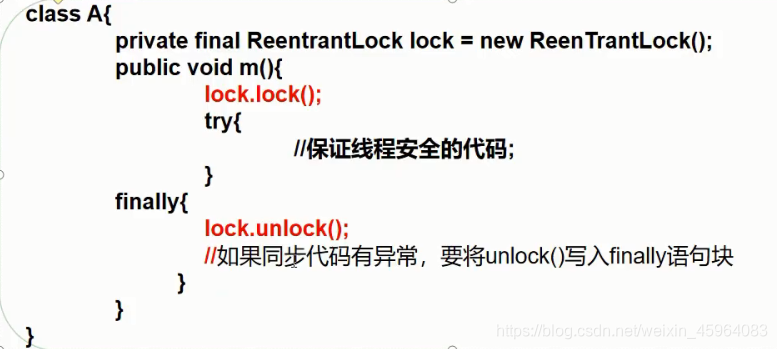线程优先级
优先级高,只是意味着获得调度的概率高,并不是一定首先被CPU调度
public class TestPriority {
public static void main(String[] args) {
System.out.println(Thread.currentThread().getName()+"-->"+Thread.currentThread().getPriority());
MyPriority myPriority = new MyPriority();
Thread t1 = new Thread(myPriority);
Thread t2 = new Thread(myPriority);
Thread t3 = new Thread(myPriority);
Thread t4 = new Thread(myPriority);
//先设置优先级,再启动
t1.start(); //默认为5;
t2.setPriority(1);
t2.start();
t3.setPriority(4);
t3.start();
t4.setPriority(Thread.MAX_PRIORITY); //虽然优先级最高但不一定优先执行
t4.start();
}
}
class MyPriority implements Runnable{
@Override
public void run() {
System.out.println(Thread.currentThread().getName()+"-->"+Thread.currentThread().getPriority());
}
}
守护线程(daemon)
- 线程分为用户线程和守护线程
- 虚拟机必须确保用户线程执行完毕
- 虚拟机不用等待守护线程执行完毕,如后台记录操作日志,垃圾回收线程(gc),监控内存
public class TestDaemon {
public static void main(String[] args) {
God god=new God();
Ou ou =new Ou();
Thread thread = new Thread(god);
thread.setDaemon(true);
thread.start();
new Thread(ou).start();
}}
//上帝
class God implements Runnable{
@Override
public void run() {
while (true){
System.out.println("守护");
}
}
}
//你
class Ou implements Runnable{
@Override
public void run() {
for (int i = 0; i < 36500; i++) {
System.out.println("快乐活着");
}
System.out.println("goodbye");
}
}
线程同步
并发:同一个对象被多个线程同时操作
当并发时如果某些线程想修改这个对象,就需要线程同步,这其实就是一种等待机制,这些线程需要进入这个对象的等待池形成队列,前面线程使用完毕,下一个线程再使用。
线程同步的形成条件:队列+锁
锁机制(synchronized)每一个对象都有一把锁,synchronized方法都必须获得调用该方法的对象的锁才能执行,否则线程会阻塞,方法一旦执行,就独占该锁,后面被阻塞的线程才能获得这个锁,继续执行。
缺陷:若将一个大的方法申明为synchronized将会影响效率。
方法里面需要修改的内容才需要锁,锁的太多,浪费资源。
加上synchronized这个关键字就会变成同步方法。
synchronized默认锁的是this. 就是这个对象本身,或者是这个方法本身的类
有两种形式:
1. synchronized同步方法,锁的是这个方法本身的类
2. synchronized同步块,可以锁任何对象,锁的对象是变化的量,就是增删改的对象。比如锁银行这个类没用,所以不能用同步方法,要用同步块锁账户。
买票这个例子要锁买票这个方法。也就是买票这个类。所以可以直接用同步方法(用关键字直接修饰方法即可):
private synchronized void buy() throws InterruptedException {
}
public class UnsafeBuyTicket {
public static void main(String[] args) {
BuyTicket station = new BuyTicket();
new Thread(station,"小白").start();
new Thread(station,"小黑").start();
new Thread(station,"小红").start();
}
}
class BuyTicket implements Runnable{
private int ticketNums = 10;
boolean flag = true;
@Override
public void run() {
//买票
while (flag){
try {
buy();
} catch (InterruptedException e) {
e.printStackTrace();
}
}
}
private synchronized void buy() throws InterruptedException {
//判断是否有票
if(ticketNums<=0){
flag=false;
return;
}
Thread.sleep(100);
System.out.println(Thread.currentThread().getName()+"拿到了"+ticketNums--);
}
}
银行取钱这个例子如果对run这个方法用synchronized锁的是这个类,也就是Drawing,锁的是银行,但银行是不变的,应该锁账户,所以应该用同步块,锁用户,而不是同步方法。
直接用synchronized(account){run方法的内容}
public class UnsafeBank {
public static void main(String[] args) {
//账户
Account account = new Account(100,"结婚基金");
Drawing you = new Drawing(account,50,"你");
Drawing girlfriend = new Drawing(account,100,"女朋友");
you.start();
girlfriend.start();
}
}
//账户
class Account{
int money;
String name;
public Account(int money,String name){ //构造方法
this.money=money;
this.name=name;
}
}
//银行:模拟取款
class Drawing extends Thread{
Account account;
//取了多少钱
int drawingMoney;
//现在有多少钱
int nowMoney;
public Drawing(Account account,int drawingMoney,String name){
super(name);
this.account=account;
this.drawingMoney=drawingMoney;
}
//取钱
@Override
public void run() {
synchronized (account){
//判断有没有钱
if(account.money-drawingMoney<0){
System.out.println(Thread.currentThread().getName()+"钱不够,取不了");
return;
}
//卡内的钱
account.money = account.money-drawingMoney;
//你手里的钱
nowMoney=nowMoney+drawingMoney;
System.out.println(account.name+"余额为:"+account.money);
System.out.println(this.getName()+"手里的钱:"+nowMoney);
}
}
}
死锁
死锁:多个线程互相抱着对方需要的资源,然后形成僵持。
导致两个或者多个线程都在等待对方释放资源,都会停止执行的情况,某一个同步快同时拥有“两个以上对象的锁”时,就可能会发生“死锁”的情况
例子:
public class DeakLock {
public static void main(String[] args) {
Makeup g1=new Makeup(0,"小红");
Makeup g2=new Makeup(1,"小黑");
g1.start();
g2.start();
}
}
//口红
class Lipstick{
}
//镜子
class Mirror {
}
class Makeup extends Thread{
//需要的资源只有一份,用static来保证一份
static Lipstick lipstick = new Lipstick();
static Mirror mirror = new Mirror();
int choice ;//选择
String girlName;
Makeup (int choice,String girlName){
this.choice=choice;
this.girlName=girlName;
}
@Override
public void run() {
//化妆
try {
makeup();
} catch (InterruptedException e) {
e.printStackTrace();
}
}
//化妆,互相持有对方的锁,就是需要拿到对方的资源
private void makeup() throws InterruptedException {
if(choice == 0){
synchronized (lipstick){//获得口红的锁
System.out.println(this.girlName+"获得口红的锁");
Thread.sleep(1000);
synchronized (mirror){//一秒钟后获得镜子
System.out.println(this.girlName+"获得镜子的锁");
}
}
}else{
synchronized (mirror){//获得镜子的锁
System.out.println(this.girlName+"获得镜子的锁");
Thread.sleep(2000);
synchronized (lipstick){//两秒钟后获得口红
System.out.println(this.girlName+"获得口红的锁");
}
}
}
}
}

输出结果不对,只需将锁拿出来即可,不能报对方的锁
//化妆,互相持有对方的锁,就是需要拿到对方的资源
private void makeup() throws InterruptedException {
if(choice == 0){
synchronized (lipstick){//获得口红的锁
System.out.println(this.girlName+"获得口红的锁");
Thread.sleep(1000);
}
synchronized (mirror){//一秒钟后获得镜子
System.out.println(this.girlName+"获得镜子的锁");
}
}else{
synchronized (mirror){//获得镜子的锁
System.out.println(this.girlName+"获得镜子的锁");
Thread.sleep(2000);
}
synchronized (lipstick){//两秒钟后获得口红
System.out.println(this.girlName+"获得口红的锁");
}
}
}

Lock(锁)
ReentrantLock(可重入锁)类实现了Lock
对比:
- Lock锁是显式锁(手动开启,关闭),synchronized是隐式锁,出了作用域自动释放
- Lock只有代码块锁,synchronized有代码块锁和方法锁
- 使用Lock锁,JVM将花费较少时间来调度线程,性能更好。并且具有更好的扩展性(提供更多的子类)

生产者/消费者模式->管程法
//测试:生产者消费者模型-->利用缓冲区解决:管程法
//生产者,消费者,产品。缓冲区
public class TestPC {
public static void main(String[] args) {
SynContainer container = new SynContainer();
new Producter(container).start();
new Consumer(container).start();
}
}
//生产者
class Producter extends Thread{
SynContainer container;
public Producter(SynContainer container){
this.container=container;
}
//生产
@Override
public void run() {
for (int i = 0; i < 100; i++) {
container.push(new Chicken(i));
System.out.println("生产了"+i+"只鸡");
}
}
}
//消费者
class Consumer extends Thread{
SynContainer container;
public Consumer(SynContainer container){
this.container=container;
}
//消费
@Override
public void run() {
for (int i = 0; i < 100; i++) {
System.out.println("消费了-->"+container.pop().id+"只鸡");
}
}
}
//产品
class Chicken{
int id;
public Chicken(int id) {
this.id = id;
}
}
//缓冲区
class SynContainer {
//需要一个容器大小
Chicken[] chickens=new Chicken[10];
//容器计数器
int count;
//生产者放入产品
public synchronized void push(Chicken chicken){
//如果容器满了,就等待消费者消费
if(count==chickens.length){
//通知消费者消费,生产等待
try{
this.wait();
}catch (InterruptedException e){
e.printStackTrace();
}
}
//如果没有满就需要丢入产品
chickens[count]=chicken;
count++;
//可以通知消费者消费了
this.notifyAll();
}
// 消费者消费产品
public synchronized Chicken pop(){
//判断是否消费
if(count==0){
//等待生产者生产,消费者等待
try {
this.wait();
} catch (InterruptedException e) {
e.printStackTrace();
}
}
//如果可以消费
count--;
Chicken chicken = chickens[count];
//通知生产者生产
this.notifyAll();
return chicken;
}
}
线程池
经常创建和销毁、使用特别大的资源,比如并发情况下的线程,对性能影响很大,提前创建好多个线程,放入线程池冲,使用时直接获取,使用完放回池中。可以避免频繁创建销毁、实现重复利用。类似生活中的公共交通工具
//测试线程池
public class TestPool {
public static void main(String[] args) {
//创建服务,创建线程池 newFixedThreadPool参数为线程池的大小
// ExecutorService是真正的线程池接口,需要通过Executors创建线程池的大小
ExecutorService service = Executors.newFixedThreadPool(10);
service.execute(new MyThread());
service.execute(new MyThread());
service.execute(new MyThread());
service.execute(new MyThread());
//2.关闭连接
service.shutdown();
}
}
class MyThread implements Runnable{
@Override
public void run() {
System.out.println(Thread.currentThread().getName());
}
}





















 601
601











 被折叠的 条评论
为什么被折叠?
被折叠的 条评论
为什么被折叠?








